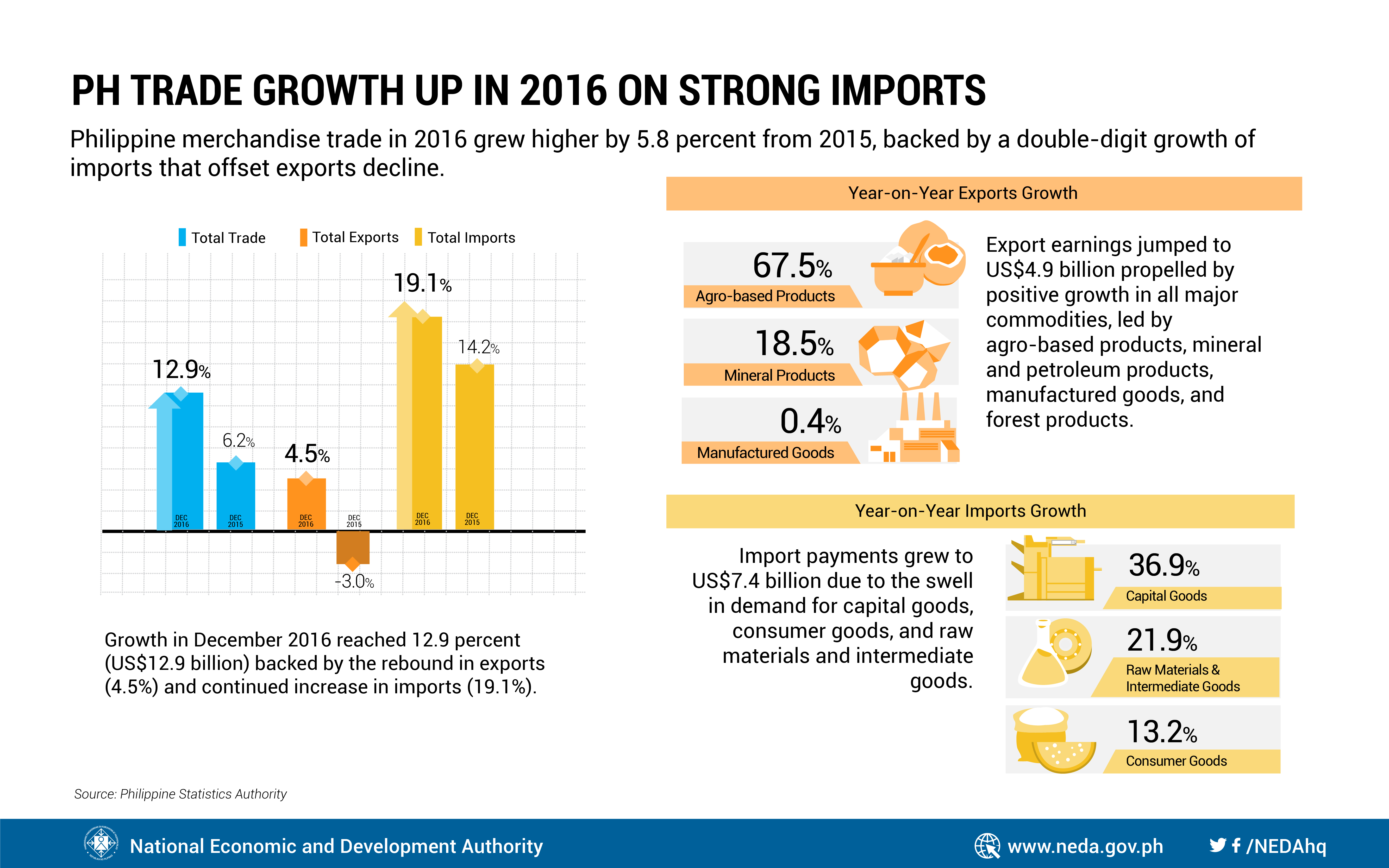Philippine merchandise trade in 2016 grew 5.8 percent from 2015, backed by double-digit growth of imports that offset exports decline, according to the National Economic and Development Authority (NEDA).
Based on a report by the Philippine Statistics Authority, the full-year 2016 total trade reached US$137.4B, with the 14.2-growth in imports mitigating the 4.4 percent decline in exports.
“This means that we need to keep diversifying and exploring new markets, in addition to fully tapping our existing trade agreements to push further our upward trajectory,” said Socioeconomic Planning Secretary Ernesto M. Pernia.
Meanwhile, growth in December 2016 reached 12.9 percent (US$12.9 billion) backed by the rebound in exports (4.5%) and continued increase in imports (19.1%).
In the same period, export earnings jumped to US$4.9 billion propelled by positive growth in all major commodities, led by agro-based products, petroleum and mineral products, and manufactured goods.
“This demonstrates the recovery of our agricultural sector from the effects of the El Niño. It also indicates the positive contributions of mining and petroleum to the economy. This implies that we will have to find a wholesome balance between mining development and environmental protection” the Cabinet official said.
Also, import payments grew to US$7.4 billion due to the expanding demand for capital goods, consumer goods, and raw materials and intermediate goods, despite the drop in mineral fuels and lubricants.
Moreover, the country’s increase in exports receipts from its neighbors, largely from China (36.6%) and Taiwan (10.5%), was able to offset the decline from other markets.
Only Vietnam and the Philippines posted positive gains for the 2016 merchandise trade as other selected Asian countries remained weak.
“If we want to continue being in the forefront, we need to create policies that enhance and expand opportunities for industries, expand our infrastructure, and shift to a knowledge-based economy. We also need to push for reforms that will sustain growth such as the comprehensive tax reform package, which could provide additional impetus to consumption and investment,” said Pernia.
He added that the country needs to instill a global mindset on MSMEs and provide them a conducive business environment. This can be done through helping them address internal and external constraints to their development and trade potential. He noted that all these strategies are included in the proposed Philippine Development Plan 2017-2022.
Infographic:
–END–




